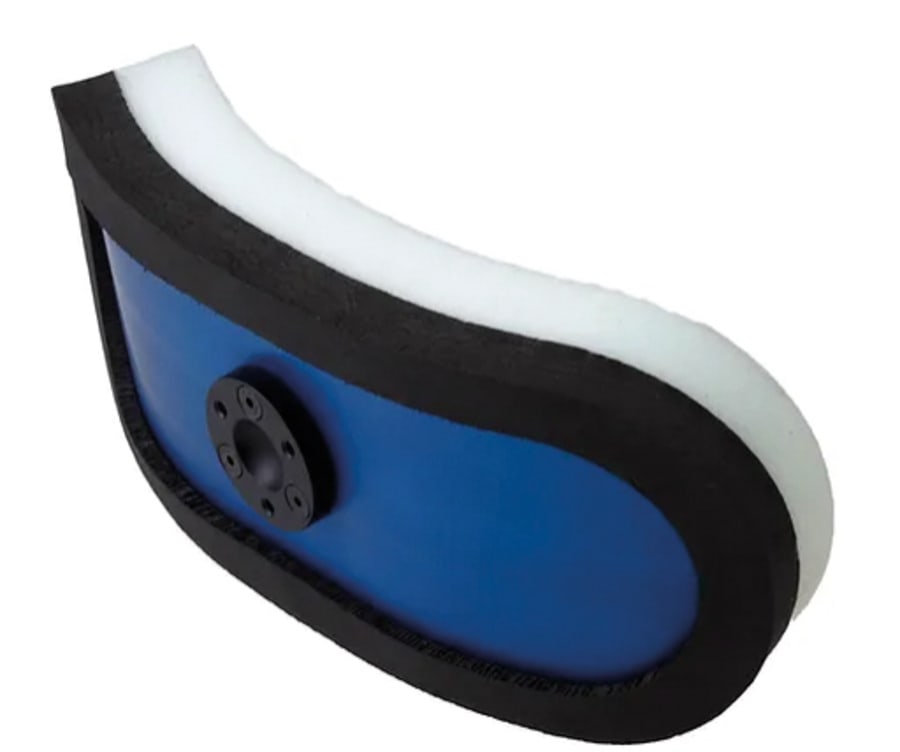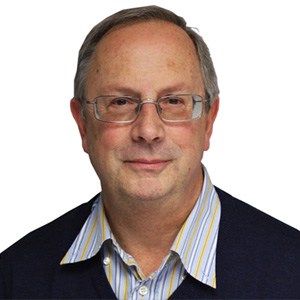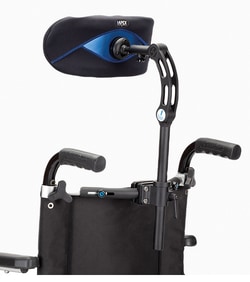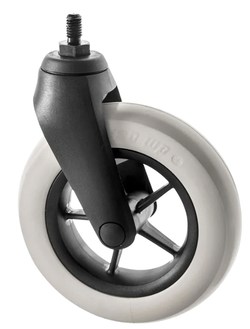Let’s Get It Clear: What’s in an ‘assembly’, and what should we call the components?

When you order an ‘assembly’ to fit onto your assistive technology device such as onto a wheelchair, what should you rightfully expect to receive, and what extras might you need to consider to be able to attach that assembly to the chair – or would you expect that all those extras would be in the bag?
In this article we consider the elements that might make up a postural support device, and what we should call those elements, and also what might be in a wheelchair part. Consistency in terminology should make it easier comparing one manufacturer’s catalogue or
datasheet with another’s.
In 2007 an international standard (ISO 7176-26)1 was published providing guidance about what were the correct terms to be used when describing aspects of a wheelchair, what were deprecated (disapproved of) terms, and then providing definitions for the published terms. The reason for outlining deprecated terms is to ensure that the term is appropriate to the use. Whereas loose descriptions can be confusing at best and harmful at worst. An example would be the back on a wheelchair which is correctly termed a Back Support, while Back Rest is a deprecated term.
Another example is a “posterior lower leg support”, which is defined as a “postural support device intended to contact the posterior surface of the lower leg”, and where each of the following terms were deprecated: calf pad, calf panel, calf strap, calf support, leg strap, leg support, leg rest pad, lower leg support and posterior leg support.
ISO standards each undergo ‘systematic review’ every few years. Currently a group of experts from around the world is reviewing all the terms that were included in the 2007 version, what terms should be added, and how each term is best defined.
They meet for an hour or so by Zoom every fortnight, and as one might imagine an hour can pass quite quickly while trying to get to the bottom of what a term means as used in, say, the US and how that is different from its use in Europe, and, indeed, what is the best compromise definition so that when a term is used in one part of the world it means the same in another.
with ancillary hardware components highlighted
Postural support devices
One item that took up some discussion time in 2023 was what was involved in a postural support device assembly. The resulting proposal was to describe the individual components by what they do, or are. To illustrate this, let’s use a Head Support as an example. A Head Support is an example of a rigid postural support device (PSD).
This PSD on its own is made up of three components: The PSD Pad which is covered by a PSD Cover. To give the whole PSD structure, there is a PSD Supporting Structure. (While it is true that a lot of ‘rigid’ PSDs use a pad (compressible material) with some kind of supporting structure, this isn’t true for postural supports which are flexible and work in tension.
There are a lot of flexible PSDs which don’t have a pad, but use straps or panels of fabric to conform, apply forces, and distribute pressure. Systems which work in tension can still be thought of as having contact surfaces (to the body) and a structure (load carrying elements), only they are not rigid.)
Behind a PSD pad will be a piece of PSD Interfacing Hardware. This is the term for the hardware of the supporting structure that links the PSD Pad to the PSD Connecting Hardware (or directly to the PSD Mounting Hardware). The PSD Interfacing Hardware may often itself be made up of different components to offer precise adjustment to achieve the optimal three-dimensional placement of the PSD. Frequently a ball joint is used at the interface with the pad, to provide finer adjustment.
The PSD Connecting Hardware is the term for the hardware in between the PSD Interface Hardware and the PSD Mounting Hardware. This element often provides the means for height adjustment, and gross positioning of the PSD.
The final element may well be the PSD Mounting Hardware. This is the hardware which links the PSD Connecting Hardware to the item to which the PSD is being mounted. For a head support this is often the shell of a back support, and this may need a further piece of hardware, a PSD Mounting Hardware Interface, to be able to attach to the back support’s proprietary attachment points.
To complicate things further, each of these ‘components’ might be an assembly it itself, in that each might consist of a number of components. However, to ascribe the term ‘assembly’ to all the components of a head support and its various connecting, mounting, and interfacing elements may not be helpful, especially as each item may require separate prescription to meet the specific clinical needs of the user, and the equipment with which the PSD is being used.
Please note that many of these hardware components could also be used to position an Augmentative and Alternative Communication Device (AAC). In those cases, just substitute AAC for PSD in the term.
Wheelchair components
There are various ‘components’ of a wheelchair that may themselves be described as assemblies. And some of those assemblies may have quite a few components. An example would be a castor assembly. In ISO 7176-26 1 this is defined as the “combination of the castor wheel, castor wheel axle, castor fork, castor stem, castor stem housing, bearings, and tyres”.
This still leaves open whether all the required nuts and washers are included. We, across the industry, still have work to do to make sure everyone is clear as to what they should expect to receive when they order an assembly. In the meantime, hopefully you now have some useful terms to describe the different components of a PSD and its related hardware.
Reference
1 ISO 7176-26:2007 – Wheelchairs – Part 26: Vocabulary
Further items can be found at www.beshealthcare.net. If you are interested in receiving further information on the topic, please contact 
Dr Barend ter Haar has been involved in seating and mobility for over 30 years, including lecturing internationally and developing international seating standards.



